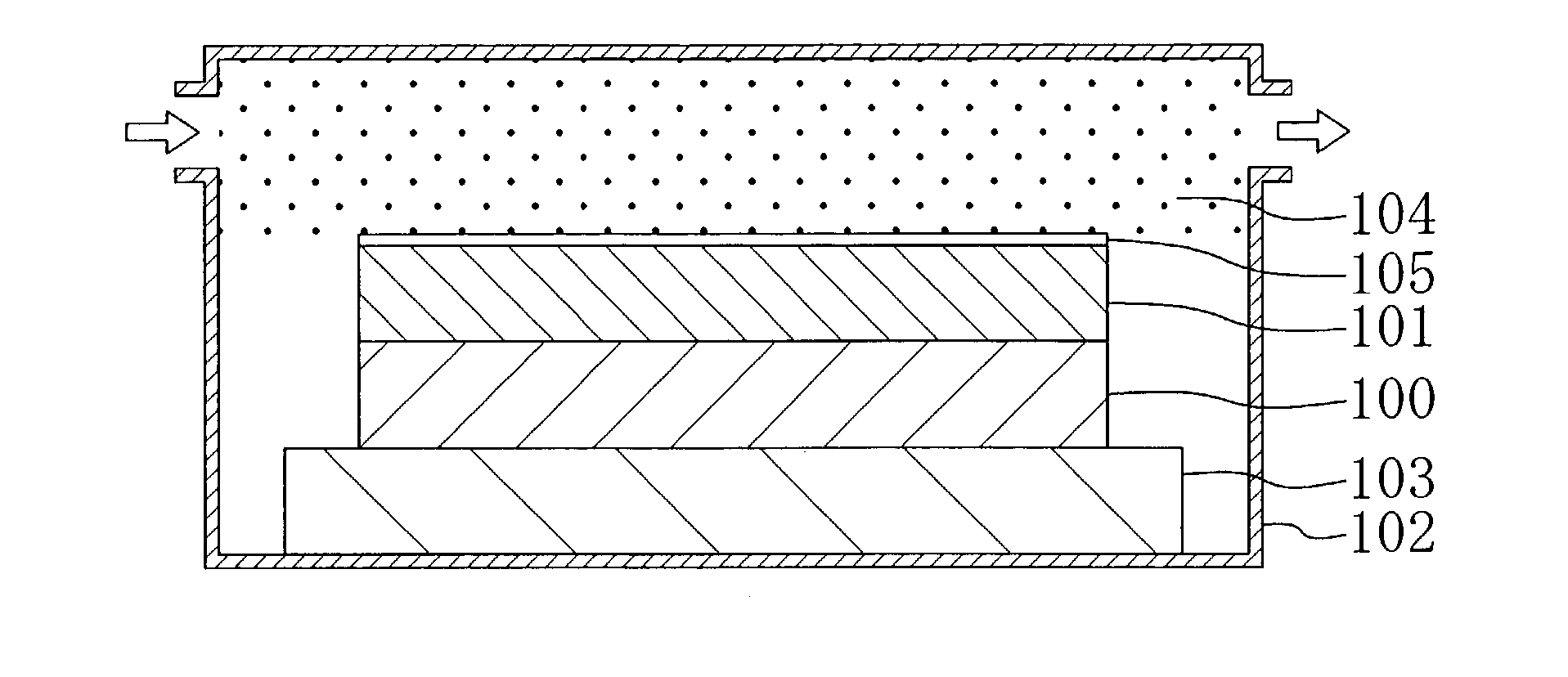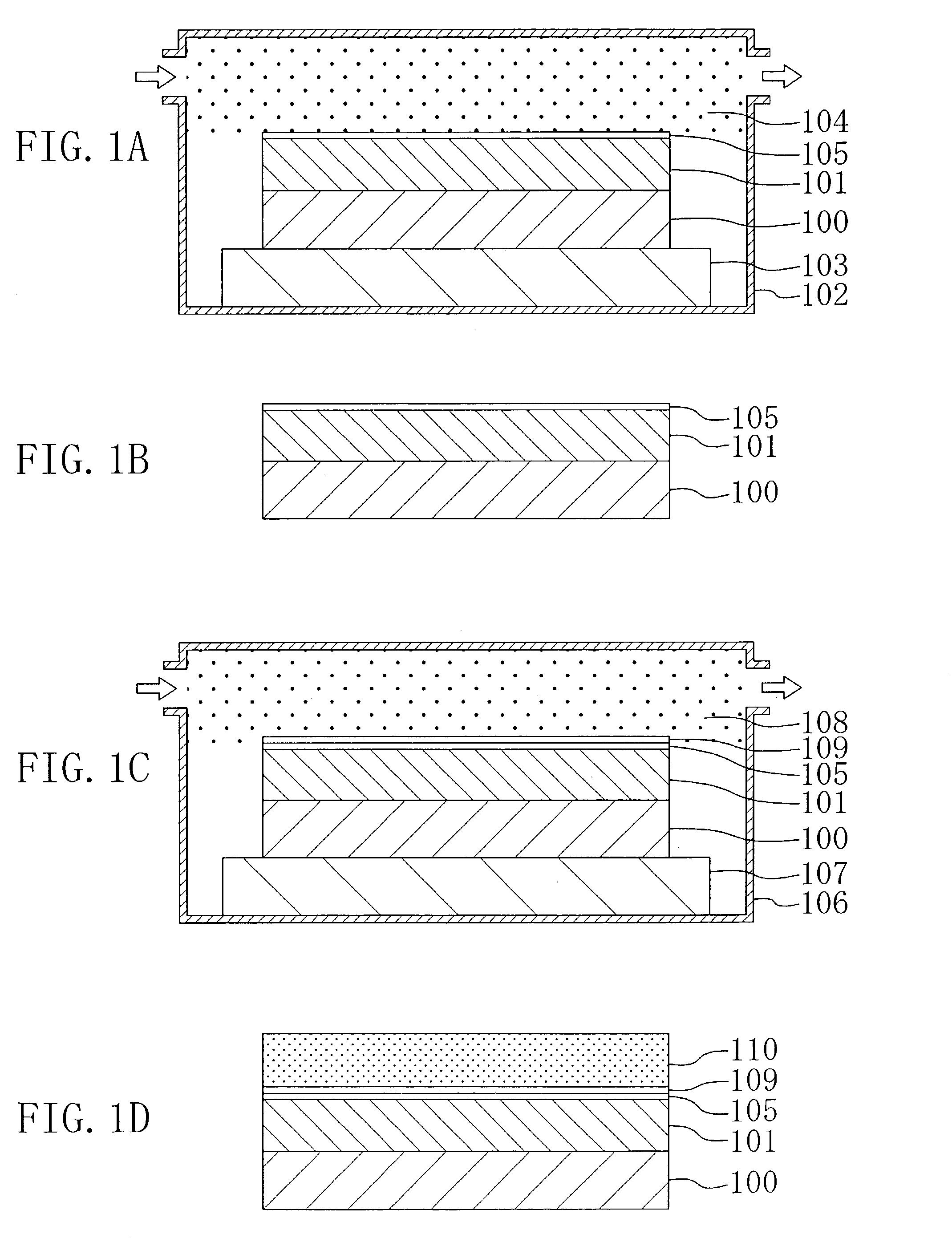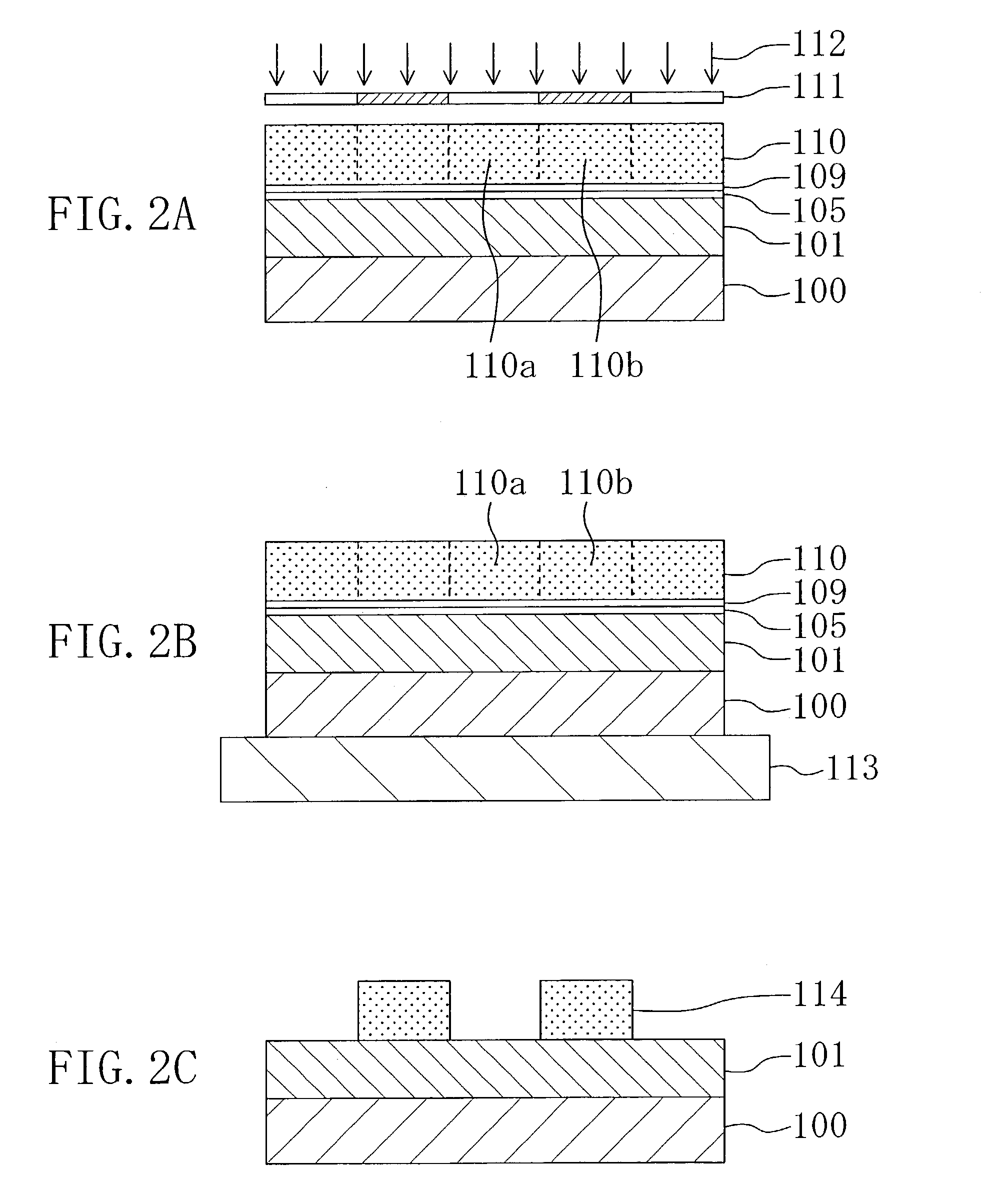Pattern formation method
- Summary
- Abstract
- Description
- Claims
- Application Information
AI Technical Summary
Benefits of technology
Problems solved by technology
Method used
Image
Examples
embodiment 1
[0035]A pattern formation method according to Embodiment 1 of the invention will now be described with reference to FIGS. 1A through 1D and 2A through 2C.
[0036]First, a chemically amplified resist material having the following composition is prepared:
[0037]
Base polymer: poly((methoxymethyl acrylate) − 2 g(γ-butyrolactone methacrylate))(wherein methoxymethyl acrylate:γ-butyrolactonemethacrylate = 70 mol %:30 mol %)Acid generator: triphenylsulfonium triflate0.04 gSolvent: propylene glycol monomethyl ether acetate 20 g
[0038]Next, as shown in FIG. 1A, an organic polymer made of aromatic hydrocarbon including no fluorine (for example, SiLK manufactured by Hitachi Chemical Co., Ltd. (with a dielectric constant of 2.65)) is deposited on a substrate 100, so as to form a low dielectric insulating film 101 corresponding to an underlying film. Thereafter, the substrate 100 is placed in a first chamber 102 and kept on a first hot plate 103. Then, while annealing the substrate 100 with the fir...
embodiment 2
[0049]A pattern formation method according to Embodiment 2 of the invention will now be described with reference to FIGS. 3A through 3D and 4A through 4C.
[0050]First, a chemically amplified resist material having the following composition is prepared:
[0051]
Base polymer: poly((methoxymethyl acrylate) − 2 g(γ-butyrolactone methacrylate))(wherein methoxymethyl acrylate:γ-butyrolactonemethacrylate = 70 mol %:30 mol %)Acid generator: triphenylsulfonium triflate0.04 gSolvent: propylene glycol monomethyl ether acetate 20 g
[0052]Next, as shown in FIG. 3A, an organic polymer made of aromatic hydrocarbon including no fluorine (for example, SiLK manufactured by Hitachi Chemical Co., Ltd. (with a dielectric constant of 2.65)) is deposited on a substrate 200, so as to form a low dielectric insulating film 201 corresponding to an underlying film. Thereafter, the substrate 200 is placed in a chamber 202 and kept on a first hot plate 203. Then, while annealing the substrate 200 with the first hot...
embodiment 3
[0062]A pattern formation method according to Embodiment 3 of the invention will now be described with reference to FIGS. 5A through 5D and 6A through 6C.
[0063]First, a chemically amplified resist material having the following composition is prepared:
[0064]
Base polymer: poly(vinyl phenol) 6 gCrosslinking agent: 2,4,6-tris(methoxymethyl)0.12 gamino-1,3,5-s-triazineAcid generator: phthalimino triflate0.02 gSolvent: propylene glycol monomethyl ether acetate 30 g
[0065]Next, as shown in FIG. 5A, an organic polymer made of aromatic hydrocarbon including no fluorine (for example, SiLK manufactured by Hitachi Chemical Co., Ltd. (with a dielectric constant of 2.65)) is deposited on a substrate 300, so as to form a low dielectric insulating film 301 corresponding to an underlying film. Thereafter, the substrate 300 is placed in a first chamber 302 and kept on a first hot plate 303. Then, while annealing the substrate 300 with the first hot plate 303 at a temperature of 90° C., gas-phase hex...
PUM
 Login to View More
Login to View More Abstract
Description
Claims
Application Information
 Login to View More
Login to View More - R&D
- Intellectual Property
- Life Sciences
- Materials
- Tech Scout
- Unparalleled Data Quality
- Higher Quality Content
- 60% Fewer Hallucinations
Browse by: Latest US Patents, China's latest patents, Technical Efficacy Thesaurus, Application Domain, Technology Topic, Popular Technical Reports.
© 2025 PatSnap. All rights reserved.Legal|Privacy policy|Modern Slavery Act Transparency Statement|Sitemap|About US| Contact US: help@patsnap.com



